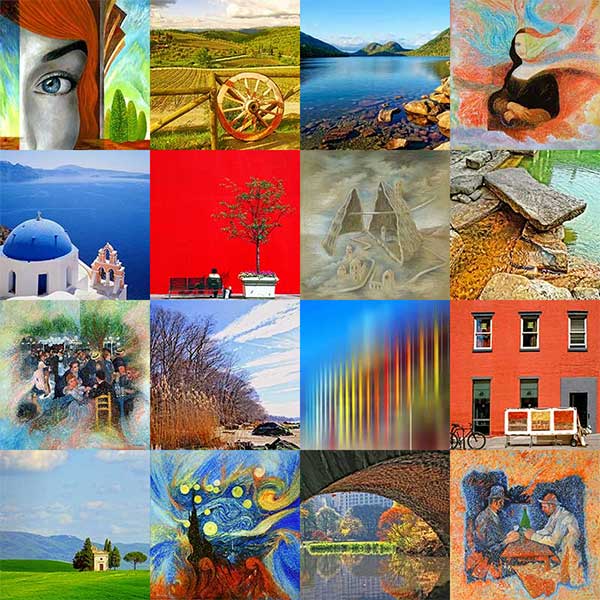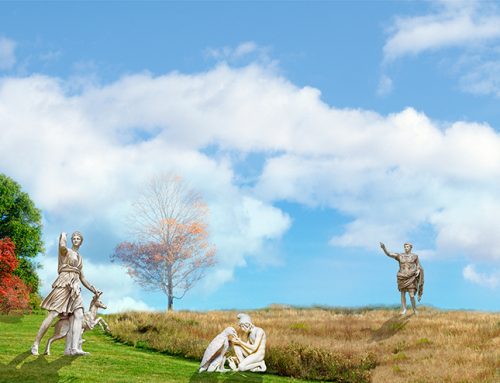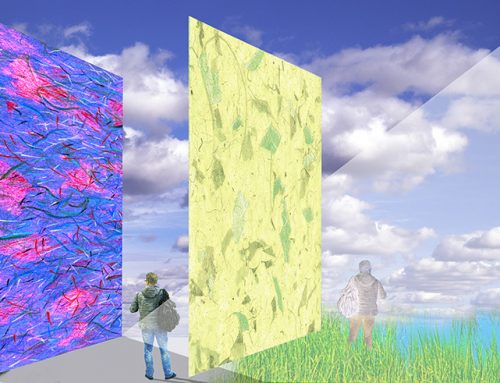Art styles and Movements that shaped the art world
Art styles is an article about artistic styles and art movements that have shaped the art world. An art movement can be considered an art style with a specific common philosophy by a group of artists during a period of time. Throughout history, there have been many “art movements” and many more”art styles”. And several classifications exist. It is important to note, that art movements and styles come and go like fashion. A so-called art style “en vogue” today, will see its’ popularity diminish tomorrow. If you are a serious collector of art, you need to know the art movements and styles. Those that have come and gone, and the current trends.
The article gives a historical perspective by listing rough chronological dates when the listed art styles (movements) were in vogue. The “Post Internet Art” movement happening now, is not listed. It requires a whole article of its’ own. The article lists the most famous artists who shaped these art styles.
Consider this article, an introduction. Art styles encompassed many forms of art. Painting, sculpture to name just two. This article mainly concentrates on painting. Furthermore, the article lists only the most important painting styles. Those which have left a significant mark and deeply affected the art world.
Our art world has had a rich history of art styles. You can read more about art styles HERE.
Classicism
Paraphrased from the Wikipedia entry: “…refers generally to a high regard for a classical period, classical antiquity in the Western tradition, as setting standards for taste which the classicists seek to emulate. The art of classicism typically seeks to be formal and restrained. A violent emphasis or a sudden acceleration of rhythmic movement would have destroyed those qualities of balance and completeness through which it retained until the present century its position of authority in the restricted repertoire of visual images.” Classicism, as Clark noted, implies a canon of widely accepted ideal forms…”
Renaissance art
“…Renaissance art, painting, sculpture, architecture, music, and literature produced during the 14th, 15th, and 16th centuries in Europe under the combined influences of an increased awareness of nature, a revival of classical learning, and a more individualistic view of man…” (Encyclopedia Britannica)
The Realism (1840-1880)
“…Realism has been prevalent in the arts at many periods and is in large part a matter of technique and training, and the avoidance of stylization. In the visual arts, illusionist realism is the accurate depiction of life forms, perspective, and the details of light and color. Realist works of art may emphasize the mundane, ugly or sordid, such as works of social realism, regionalism, or kitchen sink realism. The realism art movement in painting began in France in the 1850s. The realist painters rejected Romanticism, which had come to dominate French literature and art, with roots in the late 18th century…” (Wikipedia)
Impressionism (1860-1890)
“…Impressionism, French Impressionnisme, a major movement, first in painting and later in music, that developed chiefly in France during the late 19th and early 20th centuries. Impressionist painting comprises the work produced between about 1867 and 1886 by a group of artists who shared a set of related approaches and techniques. The most conspicuous characteristic of Impressionism in painting was an attempt to accurately and objectively record visual reality in terms of transient effects of light and color. In music, it was to convey an idea or effect through a wash of sound rather than a strict formal structure…” (Encyclopedia Britannica)
Notable artist of this movement was Pierre Auguste Renoir (1841-1919)
Symbolism (1880-1910)
“…a late nineteenth-century art movement of French, Russian and Belgian origin in poetry and other arts. (Wikipedia)
Notable artist of this movement was Gustav Klimt (1862-1918)
Fauvism (1899-1908)
“…the style of Les Fauves (French for “the wild beasts”), a group of early twentieth-century Modern artists whose works emphasized painterly qualities and strong color over the representational or realistic values retained by Impressionism. While Fauvism as a style began around 1904 and continued beyond 1910, the movement as such lasted only a few years, 1905–1908, and had three exhibitions…” (Wikipedia)
The most important painter that represents this style was Henri Matisse (1869-1954)
Cubism (1908-1914)
“…is an early-20th-century art movement which brought European painting and sculpture historically forward toward 20th century Modern art. Cubism in its various forms inspired related movements in literature and architecture. Cubism has been considered to be among the most influential art movements of the 20th century. The term is broadly used in association with a wide variety of art produced in Paris (Montmartre, Montparnasse, and Puteaux) during the 1910s and extending through the 1920s…” (Wikipedia).
An important painter that represents this style was Pablo Picasso (1881-1973)
Art Nouveau (1890-1905) movement
“… is an international style of art, architecture and applied art, especially the decorative arts, that was most popular between 1890 and 1910. A reaction to the academic art of the 19th century, it was inspired by natural forms and structures, particularly the curved lines of plants and flowers…”(Wikipedia)
Post Impressionism (1880’s-1914)
“…a predominantly French art movement that developed roughly between 1886 and 1905, from the last Impressionist exhibition to the birth of Fauvism. Post-Impressionism emerged as a reaction against Impressionists’ concern for the naturalistic depiction of light and color…” (Wikipedia)
Futurism (1909-1920)
“…an artistic and social movement that originated in Italy in the early 20th century. It emphasized speed, technology, youth, and violence, and objects such as the car, the aeroplane, and the industrial city. Although it was largely an Italian phenomenon, there were parallel movements in Russia, England, Belgium and elsewhere. The Futurists practiced in every medium of art, including painting, sculpture, ceramics, graphic design, industrial design, interior design, urban design, theatre, film, fashion, textiles, literature, music, architecture, and even Futurist meals…” (Wikipedia)
An important painter that represents this style was Umberto Boccioni
Dada (1916-1924)
“… an art movement of the European avant-garde in the early 20th century, with early centers in Zürich, Switzerland at the Cabaret Voltaire (circa 1916); New York Dada began circa 1915, and after 1920 Dada flourished in Paris. Developed in reaction to World War I, the Dada movement consisted of artists who rejected the logic, reason, and aestheticism of modern capitalist society, instead expressing nonsense, irrationality, and anti-bourgeois protest in their works. The art of the movement spanned visual, literary, and sound media, including collage, sound poetry, cut-up writing, and sculpture. Dadaist artists expressed their discontent with violence, war, and nationalism, and maintained political affinities with the radical left…” (Wikipedia)
De Stijl (1917-1931)
“…also known as Neoplasticism (1917-1944) “…a Dutch artistic movement founded in 1917 in Leiden. The De Stijl consisted of artists and architects. In a narrower sense, the term De Stijl is used to refer to a body of work from 1917 to 1931 founded in the Netherlands. Proponents of De Stijl advocated pure abstraction and universality by a reduction to the essentials of form and colour; they simplified visual compositions to vertical and horizontal, using only black, white and primary colors. (Wikipedia)
“…The term Neo-plasticism is a term adopted by the Dutch pioneer of abstract art, Piet Mondrian, for his own type of abstract painting which used only horizontal and vertical lines and primary colours…” (Tate Gallery)
Art Deco (1900-1945)
“…a style of visual arts, architecture and design that first appeared in France just before World War I. “Art Deco” influenced the design of buildings, furniture, jewelry, fashion, cars, movie theatres, trains, ocean liners, and everyday objects such as radios and vacuum cleaners…It combined modernist styles with fine craftsmanship and rich materials. During its heyday, Art Deco represented luxury, glamour, exuberance, and faith in social and technological progress…” (Wikipedia)
Surrealism (1924-1966)
“…a cultural movement that began in the early 1920s, and is best known for its visual artworks and writings. Artists painted unnerving, illogical scenes with photographic precision, created strange creatures from everyday objects, and developed painting techniques that allowed the unconscious to express itself. Its aim was to “resolve the previously contradictory conditions of dream and reality into an absolute reality, a super-reality. Surrealist works feature the element of surprise, unexpected juxtapositions and non sequitur…” (Wikipedia). You can view an example of surrealism style HERE.
The most important and most well-known painter that represents this style was Salvador Dali (1904-1989).
A full article on this art movement can be found on the Blog.
Expressionism (1943-1965)
“…a modernist movement, initially in poetry and painting, originating in Germany at the beginning of the 20th century. Its typical trait is to present the world solely from a subjective perspective, distorting it radically for emotional effect in order to evoke moods or ideas. Expressionist artists sought to express the meaning of emotional experience rather than physical reality. Expressionism was developed as an avant-garde style before the First World War…” (Wikipedia)
Pop art (1950-1970)
“…The Pop art movement was largely a British and American cultural phenomenon of the late 1950s and ’60s and was named by the art critic Lawrence Alloway in reference to the prosaic iconography of its painting and sculpture. Works by such Pop artists as the Americans Roy Lichtenstein, Andy Warhol, Claes Oldenburg, Tom Wesselman, James Rosenquist, and Robert Indiana and the Britons David Hockney and Peter Blake, among others, were characterized by their portrayal of any and all aspects of popular culture that had a powerful impact on contemporary life…” (Encyclopedia Britannica)
Photo Realism (the 1960’s)
“…a North American style of painting which came into existence c. The 1960s and early 1970s. Featuring a straightforward approach to representation…The movement refers to figurative artworks created in a natural yet highly objective style. Today the term Contemporary Realism encompasses all post-1970 sculptors and painters whose discipline is representational art, where the object is to portray the “real” and not the “ideal”…” (Wikipedia)
Contemporary Realism (1960-1970)
“… style of painting which came into existence c. The 1960s and early 1970s. Featuring a straightforward approach to representation practiced by artists such as Philip Pearlstein, Alex Katz, Jack Beal and Neil Welliver. The movement refers to figurative artworks created in a natural yet highly objective style. Today the term Contemporary Realism encompasses all post-1970 sculptors and painters whose discipline is representational art, where the object is to portray the “real” and not the “ideal”…” (Wikipedia)
Neo-Expressionism (1970-1990)
“…a style of late modernist or early-postmodern painting and sculpture that emerged in the late 1970s…It is characterized by intense subjectivity and rough handling of materials…Neo-expressionism developed as a reaction against conceptual art and minimal art of the 1970s…” (Wikipedia)
Conclusion
This article is an introduction to “art styles”, an educational tool. It does not include all the art styles that shaped the art-world. In addition, it is just touching the surface, a short introduction to basic information about the artists who shaped our art world. To really learn more and see art styles, a visit to some of the best Fine Art Museums would be recommended. The best in New York City is HERE. Want to learn more? Head over to the excellent website artyfactory.
Sources
Wikipedia – Official Website
Metropolitan Museum of Art – Official Website
Encyclopedia Britannica – Official Website
The Art Story – Official Website
Tate Gallery – Official Website
Art Encyclopaedia Website
Suggested articles on the artgreeT Blog
“Digital Art” HERE
“Allegory” HERE
“Narrative Art” HERE
“Abstract” HERE
“Bosch Surrealism” HERE






